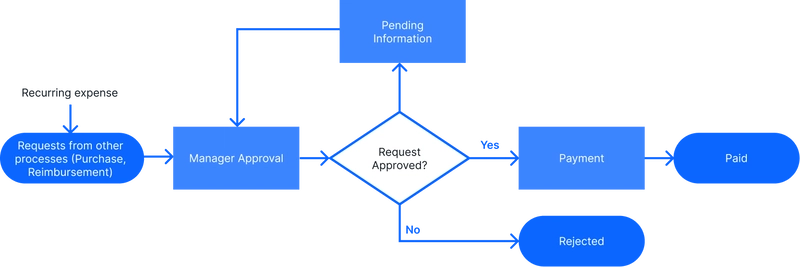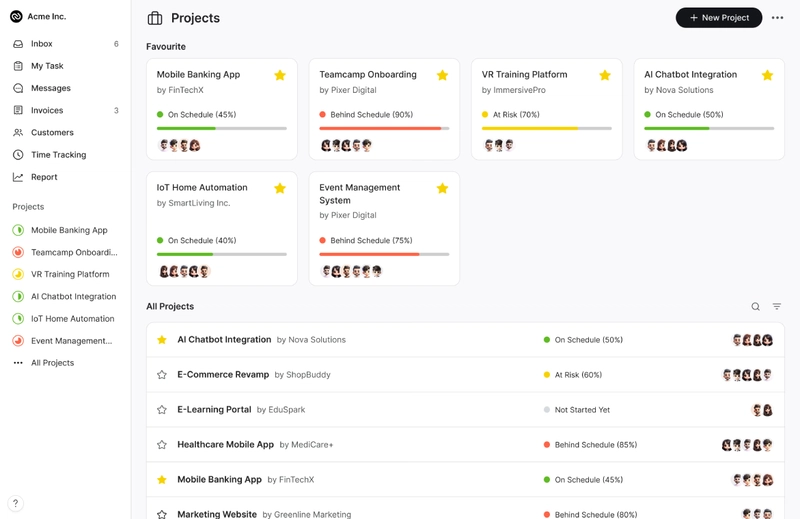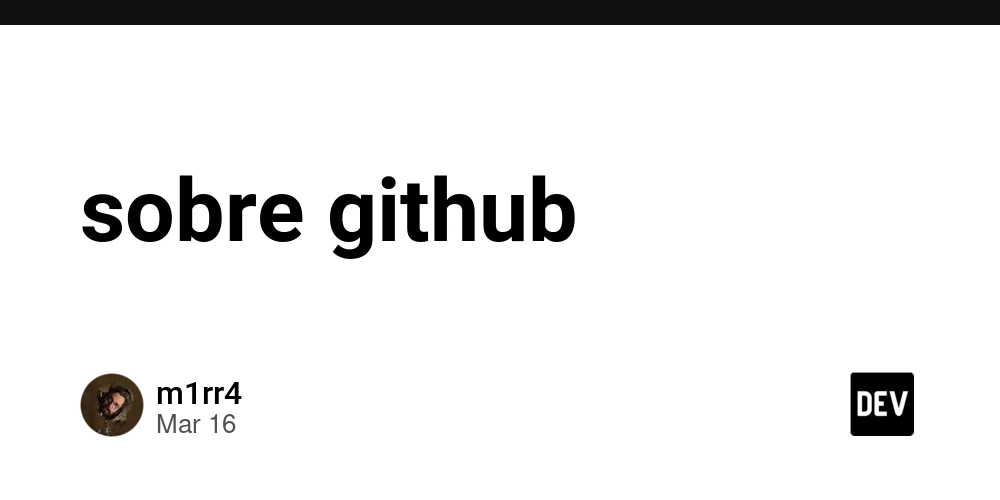Warren Buffett’s “2 List” Strategy for Developer Productivity: Focus, Ship, and Thrive
Introduction Every developer knows the feeling—an overflowing backlog filled with tasks, features, bugs, and “nice-to-haves.” You want to build, ship, and improve, but distractions and competing priorities slow you down. What if you could cut through the noise and focus on what truly matters—every sprint, every week? Warren Buffett, one of the world’s most successful investors, uses a simple but powerful method to prioritize his work and investments. Developers and engineering teams can adapt this “2 List” strategy to boost productivity, reduce context switching, and deliver meaningful results. This guide will break down Buffett’s approach, show how to apply it in your workflow, and demonstrate how tools like Teamcamp can help you stay focused and ship faster. What Is Warren Buffett’s “2 List” Strategy? Also known as the 5/25 Rule, Buffett’s strategy begins with a deceptively simple exercise: Write down your top 25 goals or tasks. Circle the five most important. Ignore the other 20—completely. Warren Buffett's "2 List" strategy is a straightforward but powerful prioritization method. The story goes that Buffett once asked his pilot, Mike Flint, to list his top 25 career goals. After Flint completed the list, Buffett instructed him to circle his top 5 priorities. This created two lists: List A: The five circled items (top priorities) List B: The remaining 20 items When Flint mentioned he would work on the top 5 goals first but still dedicate some time to the other 20, Buffett surprised him with his response: "No. You've got it wrong, Mike. Everything you didn't circle just became your Avoid-At-All-Cost list. No matter what, these things get no attention until you've succeeded with your top 5." The genius of this approach lies in its ruthless Focus. By treating the secondary list as items to actively avoid rather than "get to later actively," Buffett ensures complete dedication to what truly matters. Why Developers Need This Strategy More Than Anyone Software developers face unique productivity challenges: Context switching costs: Each time you switch between tasks, you lose valuable mental momentum Endless tool options: The sheer number of frameworks, libraries, and tools creates decision fatigue Feature creep: Projects naturally expand beyond their initial scope Technical debt: Balancing immediate needs with long-term code health As Buffett himself says, "Really successful people say no to almost everything." This mindset is crucial for developers who often try to tackle too many projects simultaneously. How to Apply the “2 List” Strategy in a Developer Workflow Step 1: Brain Dump Your Tasks Start by listing everything you want to tackle—no filtering. Include: Feature requests Technical debt Learning goals (e.g., “Master React Hooks”) Bugs and support tickets Refactoring ideas Step 2: Identify Your Top 5 Review the list and circle the five most impactful tasks. Ask yourself: Does this move the product forward? Will it unblock teammates? Does it align with sprint or business goals? Step 3: Create Your “Avoid at All Costs” List Everything not in your top five goes on the “avoid” list. Don’t touch these until the top five are done—even if they’re tempting. Step 4: Focus, Ship, Repeat Work only on your top five. Once completed, pull in the next most critical task from the “avoid” list. Real-World Example: Applying the 2 List Strategy to a Sprint Scenario: Building a New API Your backlog includes: Implement authentication Write API docs Add logging Refactor error handling Fix a UI bug Research GraphQL Improve test coverage Update dependencies Add rate limiting Write onboarding guide Top 5 Priorities (circled): Implement authentication Write API docs Add logging Refactor error handling Improve test coverage Avoid (for now): Fix a UI bug Research GraphQL Update dependencies Add rate limiting Write onboarding guide You commit the next sprint to completing the top five. Only after they’re done do you revisit the rest. This focused discipline ensures that the most impactful work ships first. Teamcamp: Streamlining Developer Prioritization and Workflow Solution for Developers Prioritization is powerful—but it’s hard to maintain without the right tools. This is where Teamcamp, an all-in-one project management and collaboration platform, becomes essential. How Teamcamp Supports the “2 List” Approach Unified Project Dashboard Get a complete overview of projects, tasks, and priorities—no more juggling spreadsheets or sticky notes. Task Prioritization Features Assign task priorities, deadlines, and custom statuses. Easily mark your “top 5” and filter out distractions. Milestone & Deadline Tracking Keep your team aligned and focused on the most important goals. Automated Workflow Management Minimize

Introduction
Every developer knows the feeling—an overflowing backlog filled with tasks, features, bugs, and “nice-to-haves.”
You want to build, ship, and improve, but distractions and competing priorities slow you down.
What if you could cut through the noise and focus on what truly matters—every sprint, every week?
Warren Buffett, one of the world’s most successful investors, uses a simple but powerful method to prioritize his work and investments. Developers and engineering teams can adapt this “2 List” strategy to boost productivity, reduce context switching, and deliver meaningful results.
This guide will break down Buffett’s approach, show how to apply it in your workflow, and demonstrate how tools like Teamcamp can help you stay focused and ship faster.
What Is Warren Buffett’s “2 List” Strategy?
Also known as the 5/25 Rule, Buffett’s strategy begins with a deceptively simple exercise:
- Write down your top 25 goals or tasks.
- Circle the five most important.
- Ignore the other 20—completely.
- Warren Buffett's "2 List" strategy is a straightforward but powerful prioritization method.
- The story goes that Buffett once asked his pilot, Mike Flint, to list his top 25 career goals.
- After Flint completed the list, Buffett instructed him to circle his top 5 priorities.
This created two lists:
- List A: The five circled items (top priorities)
- List B: The remaining 20 items
When Flint mentioned he would work on the top 5 goals first but still dedicate some time to the other 20,
Buffett surprised him with his response:
"No. You've got it wrong, Mike. Everything you didn't circle just became your Avoid-At-All-Cost list. No matter what, these things get no attention until you've succeeded with your top 5."
The genius of this approach lies in its ruthless Focus. By treating the secondary list as items to actively avoid rather than "get to later actively," Buffett ensures complete dedication to what truly matters.
Why Developers Need This Strategy More Than Anyone

Software developers face unique productivity challenges:
Context switching costs: Each time you switch between tasks, you lose valuable mental momentum
Endless tool options: The sheer number of frameworks, libraries, and tools creates decision fatigue
Feature creep: Projects naturally expand beyond their initial scope
Technical debt: Balancing immediate needs with long-term code health
As Buffett himself says, "Really successful people say no to almost everything."
This mindset is crucial for developers who often try to tackle too many projects simultaneously.
How to Apply the “2 List” Strategy in a Developer Workflow
Step 1: Brain Dump Your Tasks
Start by listing everything you want to tackle—no filtering. Include:
- Feature requests
- Technical debt
- Learning goals (e.g., “Master React Hooks”)
- Bugs and support tickets
- Refactoring ideas
Step 2: Identify Your Top 5
Review the list and circle the five most impactful tasks. Ask yourself:
- Does this move the product forward?
- Will it unblock teammates?
- Does it align with sprint or business goals?
Step 3: Create Your “Avoid at All Costs” List
Everything not in your top five goes on the “avoid” list.
Don’t touch these until the top five are done—even if they’re tempting.
Step 4: Focus, Ship, Repeat
Work only on your top five. Once completed, pull in the next most critical task from the “avoid” list.
Real-World Example: Applying the 2 List Strategy to a Sprint
Scenario: Building a New API
Your backlog includes:
- Implement authentication
- Write API docs
- Add logging
- Refactor error handling
- Fix a UI bug
- Research GraphQL
- Improve test coverage
- Update dependencies
- Add rate limiting
- Write onboarding guide
Top 5 Priorities (circled):
- Implement authentication
- Write API docs
- Add logging
- Refactor error handling
- Improve test coverage
Avoid (for now):
- Fix a UI bug
- Research GraphQL
- Update dependencies
- Add rate limiting
- Write onboarding guide
You commit the next sprint to completing the top five. Only after they’re done do you revisit the rest. This focused discipline ensures that the most impactful work ships first.
Teamcamp: Streamlining Developer Prioritization and Workflow
Prioritization is powerful—but it’s hard to maintain without the right tools. This is where Teamcamp, an all-in-one project management and collaboration platform, becomes essential.
How Teamcamp Supports the “2 List” Approach
Unified Project Dashboard
Get a complete overview of projects, tasks, and priorities—no more juggling spreadsheets or sticky notes.Task Prioritization Features
Assign task priorities, deadlines, and custom statuses. Easily mark your “top 5” and filter out distractions.Milestone & Deadline Tracking
Keep your team aligned and focused on the most important goals.Automated Workflow Management
Minimize repetitive tasks so developers can concentrate on building.Seamless Collaboration
Real-time updates and transparent communication keep everyone on the same page.
Practical Tips for Implementation
1. Start Each Day with Your Two Highest Priorities
Identify your two most important daily tasks. This takes Warren Buffett's strategy further. For example, instead of saying, "Tomorrow, I will do some code reviews," be specific: "Tomorrow, from 4 pm to 6 pm, I will review two pull requests." This approach matches the "Two-Do" list concept—a daily, focused version of Buffett's strategy that helps you maintain focus throughout the day.
2. Automate Everything You Can
Once you know your priorities, automate everything else. This frees up mental space for your top goals. Ask yourself: why spend an hour each day on repetitive tasks in your workflow when you could automate those chores? Use automation tools for tasks like code compilation, testing, and deployment.
3. Never Strive for Perfection
Developers often fall into the trap of trying to write perfect code. This slows down progress. Instead, focus on delivering code that works, is readable, and can scale in the future. Remember, there’s rarely a perfect solution—aim for a good solution that fits your case.
4. Use Project Management Tools to Maintain Focus
The right tools help you apply the "2 List" strategy. Teamcamp, an all-in-one project management platform, supports developers in focusing on their priorities through:
- Task Prioritization: Intuitive tools that highlight what matters most
- Unified Project Dashboard: A single view of all projects, tasks, and resources with real-time updates
- Milestone & Deadline Tracking: Clear visibility into timelines and critical deadlines
Organizations using Teamcamp have seen 28% faster project delivery and a 32% reduction in administrative work. These improvements come from having a system that keeps teams focused on their true priorities.
The Science Behind Why This Works
The "2 List" strategy addresses several cognitive biases that impact productivity:
- Parkinson's Law: Work expands to fill the time available. Limiting your focus to five priorities creates healthy constraints.
- The Zeigarnik Effect: Unfinished tasks create mental tension. Too many open projects increase cognitive load and reduce performance.
- Decision Fatigue: Each decision uses mental energy. By setting your priorities in advance, you save willpower for execution.
Research on developer productivity shows that letting AI handle repetitive work reduces cognitive load. In the same way, the "2 List" strategy lowers cognitive load by removing the need to decide what to work on next.
Case Study: Teamcamp in Action
A mid-sized development team struggled with:
- Constant context switching
- Missed deadlines
- Ineffective collaboration
By integrating the “2 List” strategy with Teamcamp:
- Pull request cycle time dropped by 40%
- Merge conflicts reduced by 65%
- Developer context-switching reduced by 32%
- Overall productivity increased by 28%
Teamcamp’s task prioritization and unified dashboard helped the team focus on what mattered most, ship faster, and reduce stress.
Actionable Tips for Developers: Maximize the 2 List Strategy
Review and Update Regularly
Revisit your top five weekly or at the start of each sprint. Adjust as business goals shift.Automate the Rest
Use CI/CD, build tools, and bots to handle routine tasks. Let Teamcamp manage task tracking and reminders.Communicate Clearly
Make priorities visible to your team. Use Teamcamp’s dashboards to align everyone.Say “No” (or “Not Yet”)
Defer non-priority tasks. Track them in Teamcamp for future sprints.Integrate with Your Workflow
Link Git commits to Teamcamp tasks. Use integrations with Slack, Zoom, and Google Workspace to reduce context switching.
Trends: Why Prioritization Matters More Than Ever in 2025
AI and Automation
- Reduce repetitive tasks so devs focus on high-impact work.
Integrated Platforms
- Tools like Teamcamp replace scattered toolchains with seamless project management.
Developer Well-being
- Reduced context switching = less burnout and more satisfaction.
Conclusion: Focus Wins
Warren Buffett’s “2 List” strategy is simple—but incredibly effective. For developers, it means focusing on what matters, shipping real value, and avoiding the trap of multitasking.
Combine this mindset with a tool like Teamcamp, and you build a workflow that’s focused, transparent, and efficient.
Ready to reclaim your focus and boost productivity?
Explore Teamcamp today and see how streamlined prioritization and collaboration can help your development team achieve more—with less stress.










































































































































































![[The AI Show Episode 144]: ChatGPT’s New Memory, Shopify CEO’s Leaked “AI First” Memo, Google Cloud Next Releases, o3 and o4-mini Coming Soon & Llama 4’s Rocky Launch](https://www.marketingaiinstitute.com/hubfs/ep%20144%20cover.png)


















































































































![[DEALS] The All-in-One Microsoft Office Pro 2019 for Windows: Lifetime License + Windows 11 Pro Bundle (89% off) & Other Deals Up To 98% Off](https://www.javacodegeeks.com/wp-content/uploads/2012/12/jcg-logo.jpg)





































![Is this too much for a modular monolith system? [closed]](https://i.sstatic.net/pYL1nsfg.png)






















































































































_Andreas_Prott_Alamy.jpg?width=1280&auto=webp&quality=80&disable=upscale#)
































































































![What features do you get with Gemini Advanced? [April 2025]](https://i0.wp.com/9to5google.com/wp-content/uploads/sites/4/2024/02/gemini-advanced-cover.jpg?resize=1200%2C628&quality=82&strip=all&ssl=1)













![Apple Shares Official Trailer for 'Long Way Home' Starring Ewan McGregor and Charley Boorman [Video]](https://www.iclarified.com/images/news/97069/97069/97069-640.jpg)
![Apple Watch Series 10 Back On Sale for $299! [Lowest Price Ever]](https://www.iclarified.com/images/news/96657/96657/96657-640.jpg)
![EU Postpones Apple App Store Fines Amid Tariff Negotiations [Report]](https://www.iclarified.com/images/news/97068/97068/97068-640.jpg)
![Apple Slips to Fifth in China's Smartphone Market with 9% Decline [Report]](https://www.iclarified.com/images/news/97065/97065/97065-640.jpg)









































































































































